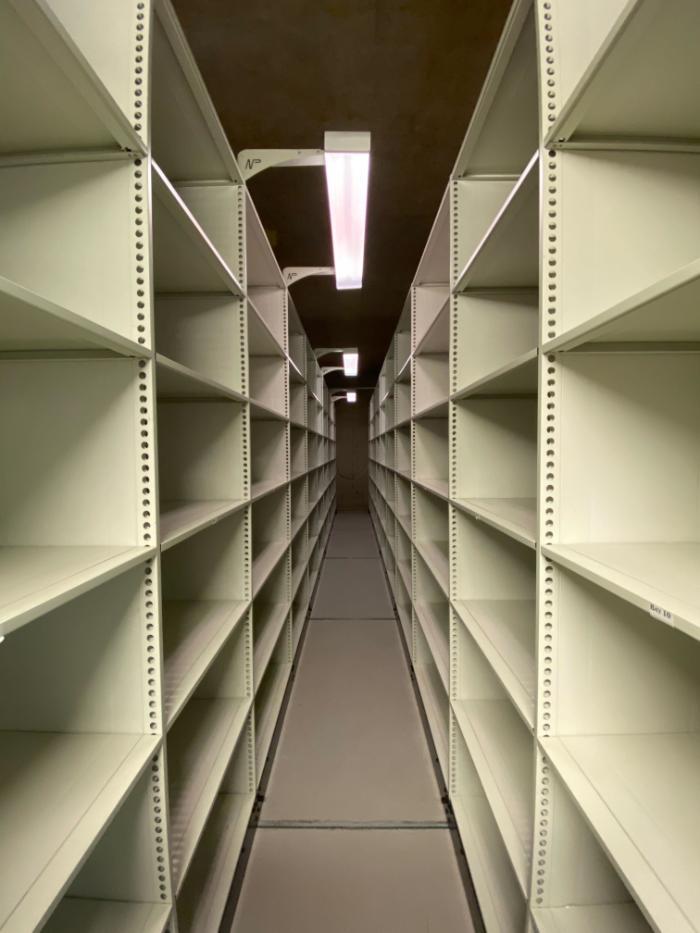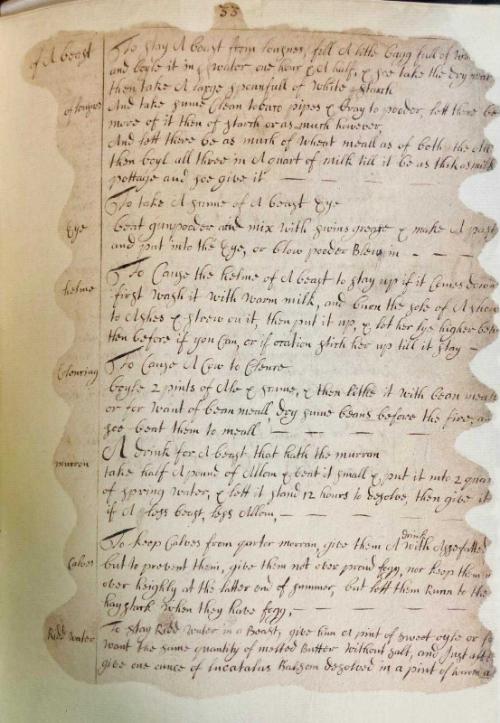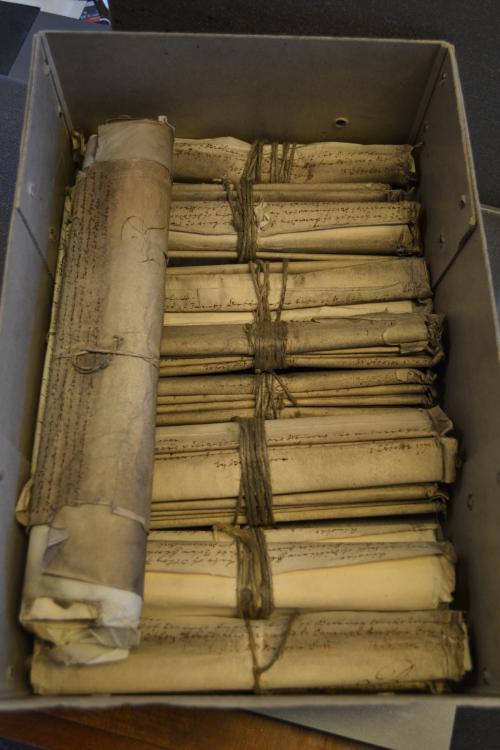Borthwick Newsletter - August 2024
Posted on 30 July 2024
August in the Archives - delve into our catalogues with this month’s featured description
Article by Arnold Stephenson Rowntree on advertising 'The Producer's Point of View', from ‘Commercial Art’, August 1928 [RFAM/ASR/JRF/3/7/1]
What’s New?
With the university summer break upon us, campus has been relatively quiet but a steady stream of visitors have continued to make their way to the Borthwick, including a team from The National Archives’ Accreditation Scheme. The scheme sets the standard for UK archive services and is required for any archive service, like the Borthwick, which is a legally recognised Place of Deposit. We were first awarded accredited status in 2018 and had a successful review three years later. Accredited archive services are required to re-apply after six years so in recent months we’ve been busy reviewing our policies and application to ensure it accurately represents all that we do and hope to do in the future. The Review Panel visited on the 3rd July and we are delighted to say that, following the review panel’s confirmation, we have been re-accredited until 2030! We’ll have a mid-point review in 2027 but in the meantime are really pleased to have had such a successful report.

We have also taken the opportunity of a quieter month to clear a bit of space in the strongrooms, something we desperately needed! Early in July our large collection of Bishops Transcripts were carefully packed up and transported to offsite storage, freeing up five whole aisles for new accessions. The Bishops Transcripts, or ‘BTs’ as they tend to be known, are copies of parish registers made each year and sent to the Bishop, and the Borthwick has the BTs for most of Yorkshire. You can read more about them on our website. If this sounds like something you might like to use, don’t despair. Just because they’ve been sent offsite does not mean they’re no longer accessible. As well as being available on microfilm, the BTs have also been photographed by Find My Past and Ancestry and you can access both services, free of charge, here at the Borthwick.
New Accessions
We received ten new accessions in July. Three of these were additions to our University of York Student Life Collection which aims to capture evidence of the student experience at York in honour of the university’s 60th anniversary. These include issues of ‘Yorick’, 1976-1977, a critical theory magazine edited by English student Martin Culverwell; photographs of a staff vs student rugby match c 1970; and a colour photograph of students at the original Derwent Bar on campus in 1971. On the subject of the university we’ve also taken in a small addition to our YUSU records (University of York Student Union) from the 1980s.
Our religious holdings have also had a boost. As well as six new boxes of material relating to the Anglican religious order The Community of the Resurrection, based at Mirfield, we also received an 1842 tithe map for the parish of Walton in July to be added to the parish archive and a box of records for Heworth Methodist Church Wives Club, 1966-2020, to be added to our Methodist collections. We also took in new records for York Deanery Synod, 1992-2010. For those who haven’t come across a Deanery Synod before, it is a council made up of members of the clergy and elected lay (non-clergy) representatives from churches in York. It meets four times a year to share information and discuss matters relating to the Church of England in York and nationally, and you’ll often find records of various Deanery Synods dotted throughout our collections, whether for York, Malton, Bulmer or other local deaneries. All of these deaneries send members to the larger York Diocesan Synod, making them a small but vital cog in the wider church machine and one which is designed to give local parishes and parishioners a say in church policy and decision making.
Lastly, we were very pleased to add some new material to our Joseph Rowntree Theatre Trust Archive after the trust asked the local community for their own records and memories of the theatre during its near 90 year history. The resulting community documentation includes programmes, posters, photographs and annual reports which will greatly enrich the theatre’s existing archive.
New Catalogues
Number of archival descriptions on Borthcat on 1st August 2024: 135,553
In July we began adding detailed box lists for the Ian Curteis Archive. The archive featured as a new accession in our May newsletter, making this an especially quick turnaround from arrival to listing. The archive comprises 115 boxes of material relating to Curteis’ career as a dramatist and television director, from his 1940s diaries to the 2002 production of his ‘Falklands Play’, which had originally been written and intended for broadcast in the 1980s. The box lists are a temporary measure, pending the full cataloguing of the archive, but they allow researchers to get a much better idea of the full scope of the archive, with covering dates and summary lists of each box’s contents. If anything from the Curteis Archive captures your interest, why not get in touch to arrange a visit?
Borthwick Out and About
We began July at the International Medieval Conference in Leeds where Keeper of Archives Gary Brannan and Research Services Archivist Lydia Dean presented on the archive of the Company of Merchant Adventurers of York, in a panel moderated by Laura Yeoman, our Access and Digital Engagement Archivist. On the 15th July, Gary and Laura also led a session at St Lawrence’s Primary School, only a short walk from the Borthwick, talking to around 80 children about archives and archival careers - with the help of some recognisable names from our collections such as the baptism of Guy Fawkes and adverts for Rowntree’s famous chocolate bars!
The university’s own Staff Festival included a talk on the Terry’s family archive by Gary and Laura, and a workshop on bookbinding by conservator Catherine Firth which allowed us to share some of our recent work with colleagues, and on the 16th July Collections Information Archivist Sally-Anne Shearn paid a visit to the headquarters of the Joseph Rowntree Foundation in York to share some the insights from our records on Homestead Park. The park started life as the garden of Quaker philanthropist Seebohm Rowntree. He opened it to the children of York in the summer of 1904 and the gardens soon became a popular and much needed public space for the people of York, with regular band concerts and sports matches. In 1936 Seebohm sold his house and garden to the Joseph Rowntree Village Trust (now the JRF) for the price of the land alone, on the condition that the JRF would continue to make the grounds available as a public park. Today Homestead Park is still owned and managed by the JRF as a free public park, and it is well worth a visit, whether you’re a York resident or just here for a holiday.
Looking forward to August, you might spot us in the latest issue of Doctor Who Magazine which highlights our new Who related addition - the archive of the show’s first Script Editor David Whitaker, mentioned in last month’s newsletter. Meanwhile the recent ‘Brut’ exhibition, showcasing photographs of brutalist and modernist architecture taken by University photographer (and frequent Borthwick collaborator) Paul Shields, has been featured in ‘Concrete’, the magazine of the Concrete Society (access for members only). From magazines to art galleries, you can also spot a conserved painting by Aubrey Williams from the University of York Art Collection at the Hepworth Gallery in Wakefield, West Yorkshire. The painting is featured as part of the Ronald Moody: Sculpting Life exhibition, which is open until November.
News from Conservation
Our Conservators have had a very busy July. Among their many responsibilities is the preparation of probate files for reprographic orders. The Borthwick holds hundreds of thousands of original wills, dating from the 13th century to 1858 when probate became a matter for civil instead of church courts. Every will ‘proved’ by the church probate courts was copied into our enormous probate registers, but often (although sadly not always) the original handwritten version of the will also survives. The will was carefully rolled up once the court had finished with it and then stored in bundles by deanery - and in the majority of cases this is how they have remained ever since. This means that when someone orders a scan of an original will we frequently find them tightly rolled - and sometimes a little sooty on the outside - and they require careful preparation by our conservation team to unroll, flatten and clean them so they can be photographed safely.
We receive a huge number of original will orders every month so there is always a steady flow of rolled wills going into Conservation and coming out again a few days later flat and ready for our reprographics team. This was more of a challenge than usual in July as our Conservation team report a record number of attached documents, meaning that the wills themselves are made up of multiple pages fastened together with tape or parchment tags and then often sealed with beeswax too. As you might imagine, these present more of a challenge to unroll and clean, albeit one that we hope results in rich rewards for the researcher who ordered it!
When they haven’t been keeping on top of the probate orders, Conservation have completed the deinstallation of the hugely successful Arts of the Islamic World exhibit. While we were very sad to see this end, it will make way for a forthcoming exhibition on Chapbooks, for which Conservation are currently busy making book rests. There will be more information about that, and other forthcoming exhibitions in a future newsletter. Last, but certainly not least, Conservator Catherine Firth has been working with two of our archives placement students to package some Rowntree volumes. We have many volumes in our collections which are too big to fit into our standard archive boxes, especially in our business archives where accounts and sales ledgers tend to be very large and unwieldy. Such volumes are wrapped in an archive-safe fabric called tyvek and tied with archival tape, keeping them safe from dust, water and accidental damage and giving our strongroom shelves something of the appearance of a very tidy parcel office.
-600x450.jpg)
Archive of the Month: The Book of Remarks of William Storr of Scalm Park
What is it? A commonplace book kept by Yorkshireman William Storr between 1678 and 1731 (with some later additions), part of our Miscellaneous Documents collection.
Where can I find it? The book is part of our Miscellaneous Documents collection - MD/112 and a brief description of its contents can be found at the link.
Why is it Archive of the Month? A 'great fish' 22 yards long caught in 1774, remedies for cattle diseases, the price of wheat, and the date of Ripon sheep fair - if you’ve ever wondered what life was like for a Yorkshire yeoman farmer in the late 17th and early 18th century, look no further than the Book of Remarks of William Storr. Born near Scarborough in 1658, William moved with his family to Scalm Park at Wistow in 1678, his father having taken a lease of the 300 acre farm there. William’s father Robert died in 1695 and William subsequently took over the lease, successfully enough that he was able to purchase the farm outright in 1717. We know a great deal about William’s life and interests, how he ran his farm and even when Wistow was hit by unusual weather, thanks to William’s diligent record keeping.

His ‘Book of Remarks’ can be classed as a ‘commonplace book’, that is a private collection of information kept for a person’s own use. Commonplace books became popular from the 16th century onwards; they were not diaries as such, but more like notebooks used to keep track of useful or interesting quotations, recipes (both food and medicinal), instructions for carrying out household or work tasks, important dates and events, and any other thing the author wanted to note down for future reference. In this way, William’s book is very typical of the genre. What makes it unique is the same thing that makes all commonplace books unique - namely that it is a record of a particular man in a particular place and time, not written for publication or even public view but for the use of himself and his family.
And William’s book is a fabulous record. He gives full details of himself and his family, when and where they were born and died, who they married and where they lived. He describes Scalm Park, its crops, fields, woods and buildings, and the work carried out by his father and himself to cultivate the land - even the prices he can get for his corn. Unsurprisingly, as a yeoman farmer he has a particular interest in the dates and locations of local fairs and in local laws and customs, especially those pertaining to land boundaries and rights of way which might affect his farm and his tenants. He makes notes on the history of the manor and parish of Wistow in which he lives, naming fields and places and recording the names of local landowners and the valuation of their estates, even the results of local elections and the number of votes cast for each candidate.
Amongst the most interesting entries for the modern reader are his observations of local weather phenomena - a ‘Remarkable’ flood in 1706 which destroyed an ‘Abundance of hay and Corn’; a drought in 1714; and strong winds the following year that blew down ‘half of the windmills in the cuntrey’ and caused seawater to fall from the sky like rain. He even records a lunar eclipse on the 29th August 1718, giving a detailed account of the event which was ‘observed by me Will. Storr all the time’, and demonstrating a keen interest in astronomy.
So fascinating is the book that it was the subject of a scholarly article for the Yorkshire Archaeological Society in the 19th century (which you can read online). However the article, by its own admission, covers only part of the book so why not come and read the rest for yourself and enjoy a short but entertaining excursion into the long-ago life of William and his neighbours.
We’ll be back in September with more news and events from the archive!


